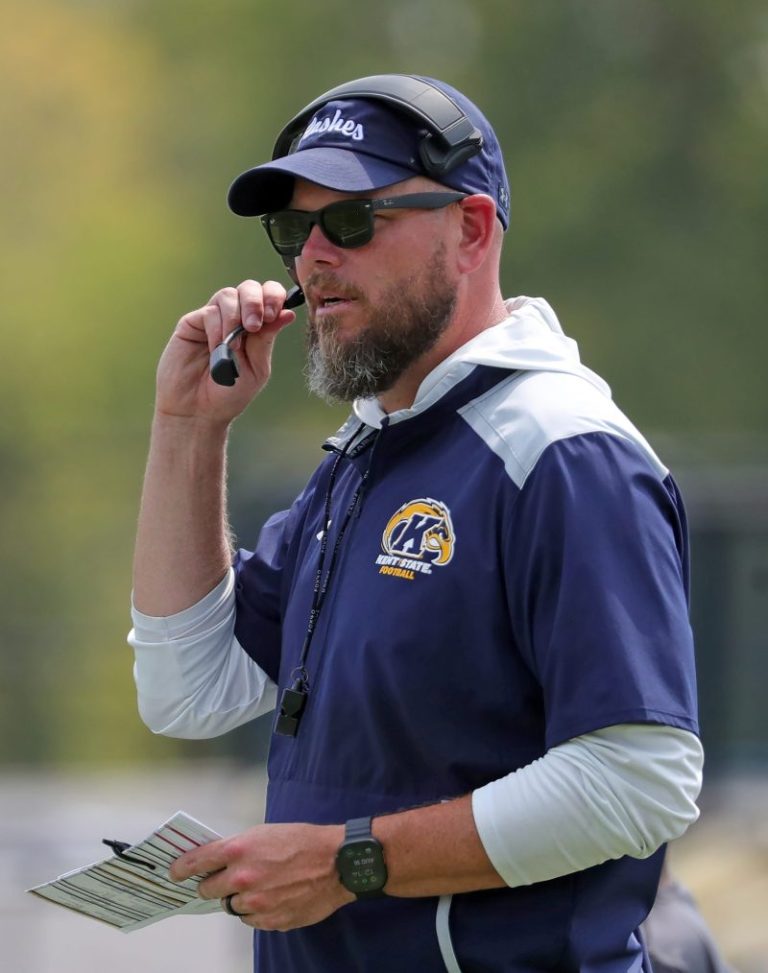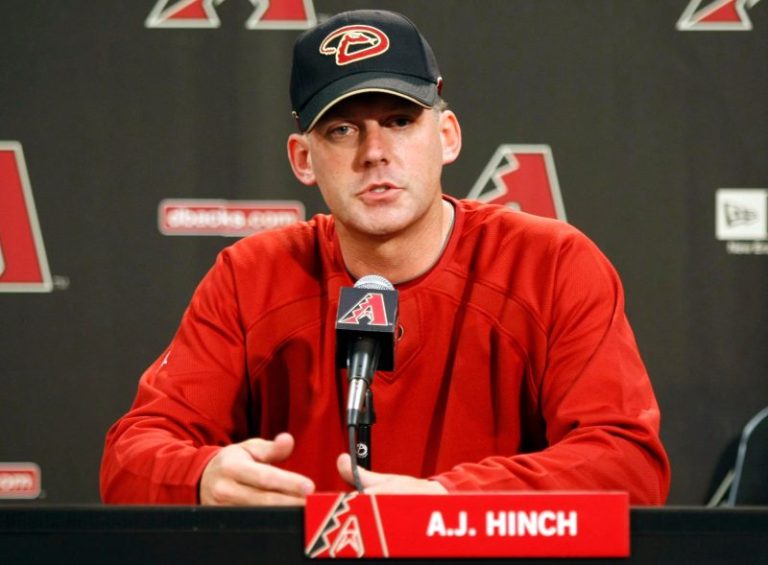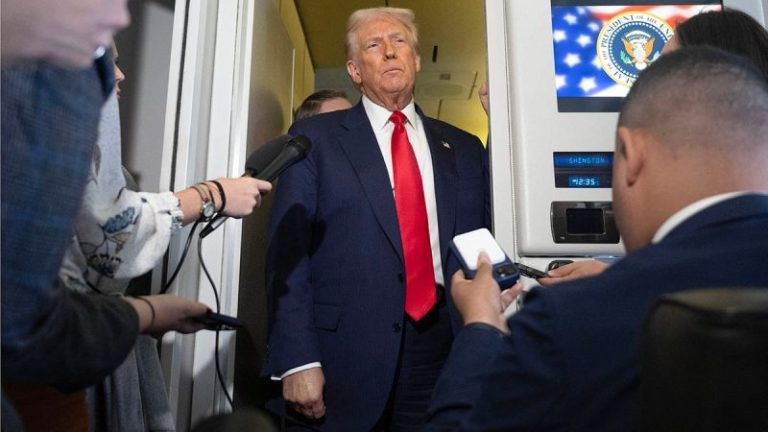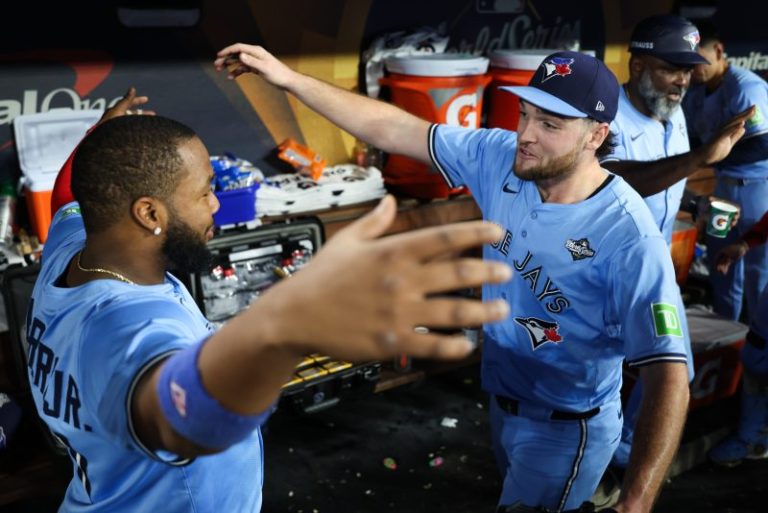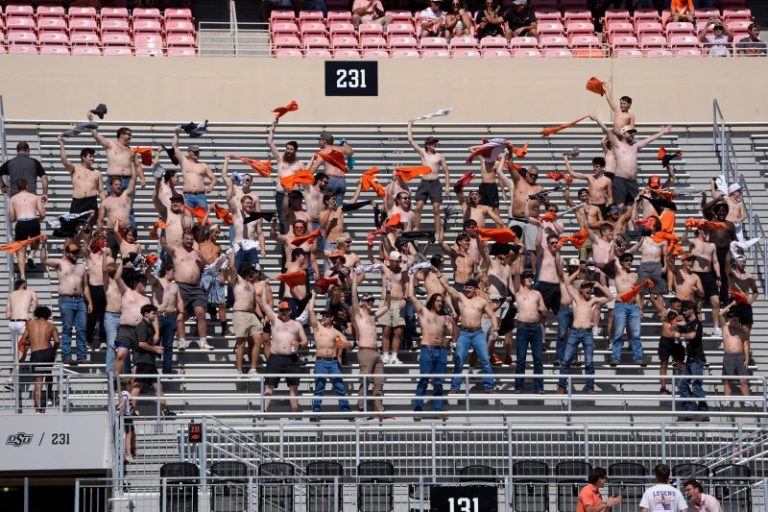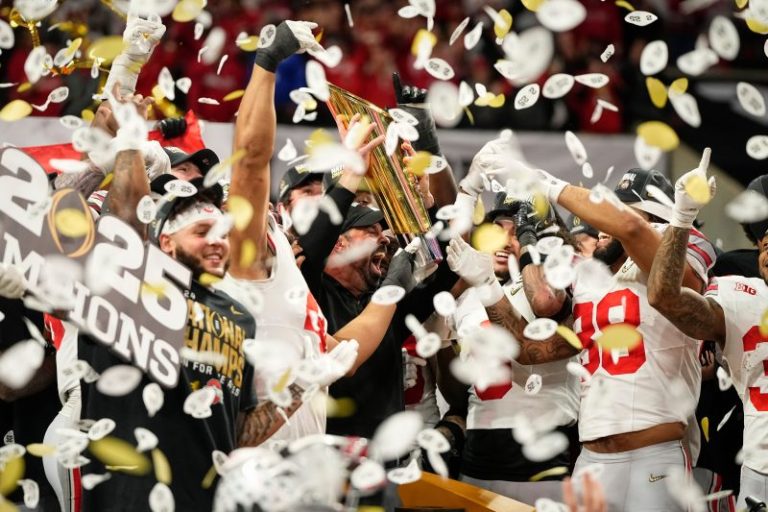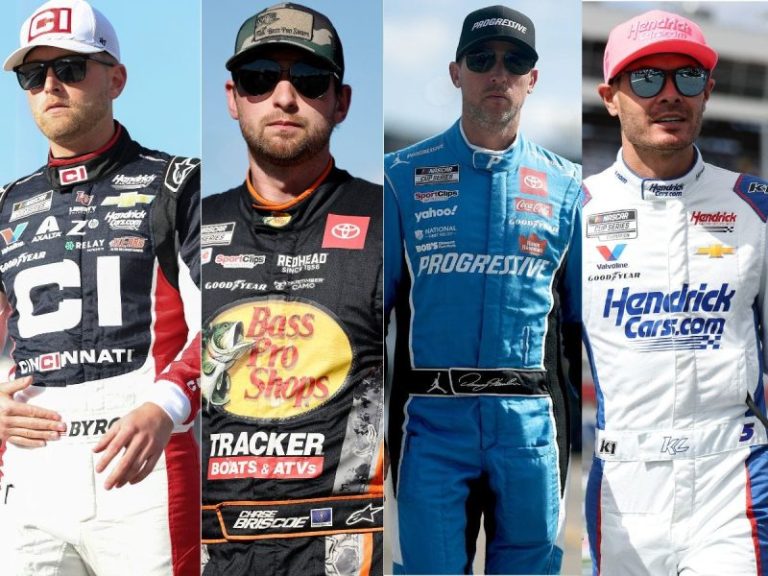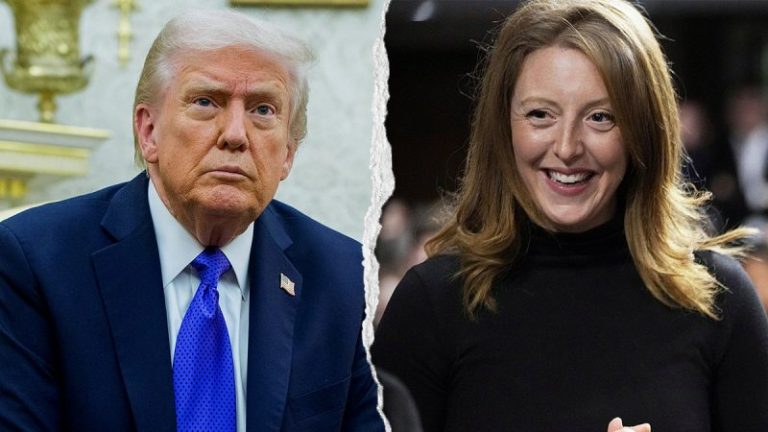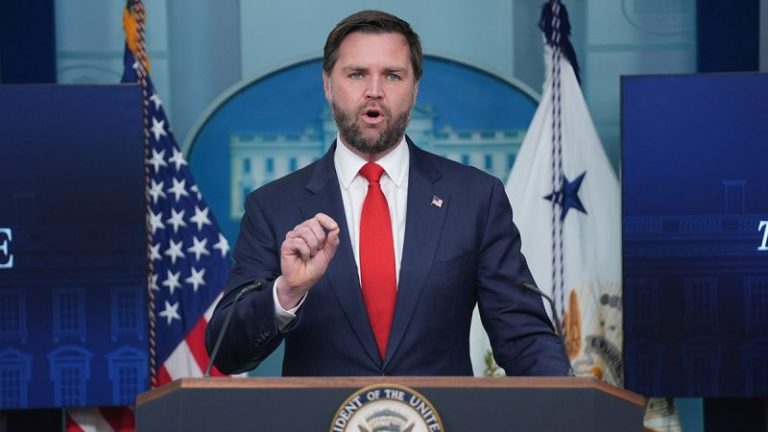LOS ANGELES — Trey Yesavage has provided a wonderful little reminder to the global baseball community: It’s possible that something special, so historic, so dominant, can remain a secret.
Make no mistake: Word is out now.
Tens of millions of fans from Canada to Tokyo to Sunset Boulevard now know plenty about Yesavage, about the 22-year-old’s crazy arm angle and audacious splitter, his preternatural calm and this historic postseason run that has put the Toronto Blue Jays on the verge of a World Series championship.
A few million more found out Oct. 29, when Yesavage walked into Dodger Stadium and in Game 5 of the World Series brought a lineup filled with Hall of Famers, a roster of defending World Series champions and more than 52,000 fans to their knees with a suffocating performance.
Across seven innings, he struck out a dozen batters, held the great Shohei Ohtani, Mookie Betts and Freddie Freeman hitless in 11 at-bats, and pitched the Toronto Blue Jays within one win of their first World Series title since 1993 with a 6-1 victory over the Dodgers.
The Blue Jays can win it all with a victory in either Game 6 or Game 7 this weekend in Canada.
And stunningly enough, arguably the most important figure in their playoff run not named Vladimir Guerrero Jr. was just a rumor to his veteran teammates a few months ago.
That’s what happens when you don’t get invited to big league camp. When your platform season in college gets disrupted by a partially collapsed lung. And when your first professional pitch, even as an advanced college draftee, is thrown in low Class A Dunedin, where the Blue Jays’ Florida training facility commences the organizational process of separating the no-ways from the maybes.
Yet there’s one guy who saw this coming.
Perhaps not that Yesavage would climb four rungs of the organizational ladder and reach the big leagues in September. Nor that he’d be their stealth No. 2 playoff starter and smash the postseason record for strikeouts by a rookie, with 39 in 26 often electric innings.
But when center fielder Daulton Varsho commenced a rehab assignment at Dunedin to begin his own climb back from rotator cuff surgery, he saw it.
No, it was not like Game 5 of the World Series. The opponent way back on April 19 was the Lakeland Flying Tigers, not the Los Angeles Dodgers, and the top of the lineup was comprised of Hadeen, Montilla and Fana, not Ohtani, Betts and Freeman.
But stuff is stuff. And dudes are dudes. And Yesavage was definitely both for both.
“It was right away. I knew he was just different,” says Varsho, who had a great view of Yesavage’s Game 5 dominance from his center field perch. “Just by the way he carried himself. His mentality. Just one of those kids you don’t really run into very often.
“And you can tell he’s just different from the get-go.”
Still, despite omnipresent prospect rankings and live streaming and advanced pitch data, to most of the Blue Jays, Yesavage’s exploits were snippets of information crackling across ham radio.
Max Scherzer, the Blue Jays’ 41-year-old starter, knew the name. Heard right around midseason that he was “striking out everyone in the minors.” Thought Yesavage might be trade deadline fodder, as veterans greedy for late-season reinforcements often believe.
Chris Bassitt, Scherzer’s buddy in Toronto’s rotation, knew the club had drafted Yesavage 20th overall out of East Carolina a year ago. Didn’t see him in spring training – the kid hadn’t yet been invited to varsity camp. And like most 36-year-old veterans, defaulted to skepticism.
“You’re in the minor leagues until you’re not,” says Bassitt. “And then it’s like, how do big league hitters approach you?”
And that’s where the puzzle started to come together: Because big league hitters looked downright stupid against him.
Uptown funk
Yesavage debuted Sept. 15 against the Tampa Bay Rays, made three regular season starts, and eyebrows started to arch.
The stuff was legit. And with Scherzer and Bassitt both on the rebound from injuries, the Blue Jays thought the kid could hold down the fort at least partially due to opponent unfamiliarity.
And then came Oct. 5, AL Division Series Game 2, and perhaps the moment that forever changed Toronto’s franchise.
“When you see MVPs and top players in the league take some of the swings they take at his stuff, that’s a really positive sign,” says closer Jeff Hoffman, who finished Game 5 with a scoreless ninth inning.
“You don’t get these guys to look like that, if your stuff’s not real. He got to see, the stuff is real. You’re playing against the Yankees. And they’re still taking those bad swings.”
And when Yesavage struck out seven of the first 10 Yankees, Rogers Centre roared. This thing was real.
Yet in the Blue Jays dugout, Shane Bieber needed to see one more trip around the lineup to make sure he could believe what he was seeing. Bieber, the former Cy Young Award winner who saved the Blue Jays by winning World Series Game 4, knew the Aaron Judges and Cody Bellingers of the world could be made to look silly. Maybe once.
“He’s got some funk to him,” says Bieber. “A different arm angle and pitch repertoire, but seeing how experienced big league hitters will adapt from at-bat to at-bat is a pretty good indicator how your stuff’s playing, from any given situation day to day.
“Second time through the order against a team, a lineup like that Yankees, the swings he was inducing, definitely inspired some confidence in our club.”
And so Yesavage went out for the fourth inning that day, and struck out Aaron Judge, Cody Bellinger and Ben Rice swinging. The Blue Jays had their ace.
Fast forward 24 days, and here was another perennial MVP, Ohtani, swinging so foolishly at a Yesavage splitter in the third inning, his helmet flew off.
And Max Muncy, gifted with one of the greatest batting eyes and plate discipline skills of his era, taking three steps toward first before he was told, come back, catcher Alejandro Kirk held that full-count slider just inside the bottom of the strike zone.
He punched out both Hernandezes, Teoscar and Kiké. Got spot starter Alex Call to offer just enough at a slider in the dirt that the first base umpire punched him out.
He got ‘em all: Twelve strikeouts in all, just the 11th in history to do so and the first since Orlando “El Duque” Hernandez punched out a dozen New York Mets in 2000.
“I think he was extremely convicted tonight,” says Bieber. “Has been through most of his starts. Credit where credit’s due: Kirky called an incredible game tonight, caught the ball extremely well. Got those low pitches, those high pitches for Trey.
“With a guy coming from that arm angle, it’s paramount to get those borderline pitches.”
‘He gets it’
Now, Yesavage has probably thrown his last pitch of 2025. Sure, the Dodgers could win Game 6, and Game 7 could go sideways, and maybe manager John Schneider might call on the kid for an out or two.
But it’s likelier that postseason line will be locked in: 39 strikeouts in 26 innings, a 1.04 WHIP, a .187 batting average.
And, absurdly, five playoff games under his belt, two more than he’s pitched so far in the regular season.
It’s been something of a running joke that Yesavage, in a clubhouse full of well-minted superstars, has hardly received any big league scratch. Just the pro-rated minimum for the two weeks he was up.
Yet the Blue Jays will see to it his playoff share is fair.
“I mean, this playoff paycheck is going to be nice whenever it hits,” says Yesavage.
All kidding aside, the symbiotic relationship between the Blue Jays’ veteran (and oft salty) pitching staff and the newbie who will still be a rookie throughout 2026 can’t be underestimated.
The vets laugh off his occasional rookie obliviousness. The kid appreciates it, and rewards them with ice cold performances on the mound.
“They have treated me the best I could have ever asked for,” says Yesavage. “So going forward with other rookies that come up, I’m going to remember how I was treated when I got here.
“The poise part, I don’t know, you got to thank my parents.”
Perhaps it’s the water in Boyertown, Pa. Nature, nurture or otherwise, the Blue Jays don’t hesitate to trot out the “built different” trope around Yesavage.
Bassitt has seen plenty in his 11-year career. He recognizes that Dodger Stadium is not the typical environment. The sound system thunders, there’s an MVP in every crevice of the lineup, and a Magic Johnson or a Jason Bateman or a Sandy Koufax might catch the corner of your eye if you look around enough.
And yet Yesavage stood up to it all.
“He’s just completely composed. Which is crazy for how young he is,” says Bassitt. “Hats off to those who coached him, who raised him. Because he’s very, very calm under pressure.”
And Bassitt rejects any notion that Yesavage simply is too young, too inexperienced to realize what he’s doing.
“He’s pretty smart. He gets it,” he says “Some guys are just built different. Mentally built different.
“The fact he has the utmost confidence walking into this place? You come into this place and all of a sudden it’s like, damn, wow.”
In an era when World Series starters are lionized for five-inning bursts, Yesavage did not give up the ball until he completed seven innings. The last time he did that was also his last college start, a 7 1/3-inning gut check against Wake Forest in an NCAA regional, Yesavage just sufficiently recovered from a collapsed lung to make his post.
Sure, that Demon Deacons lineup had three future first-round picks in it, including slam dunk AL Rookie of the Year Nick Kurtz. Barely more than a year later, he put another seven innings in the books, under far different circumstances.
It bears mentioning again: Ohtani, Betts, Freeman. The defending champions, gunning for their third title in six years, pushed to the brink by a 22-year-old.
“When it’s on,” says Scherzer, “he can make anybody in the game look stupid.
“He went out tonight and really showed it.”
And now, there’s no need for second-hand reports, for buzz about the kid punching out wannabes in Dunedin or New Hampshire or Buffalo.
This was the biggest stage. Yesavage owned it. And while he knows exactly what it is he’s done, he’s not yet ready to put it in proper context.
I’m waiting for life to slow down in this off-season,” he says, “and just be able to collect my thoughts and my feelings on this crazy year.
“It’s a crazy world. Crazy world. Hollywood couldn’t have made it this good.”
This post appeared first on USA TODAY

